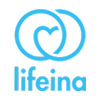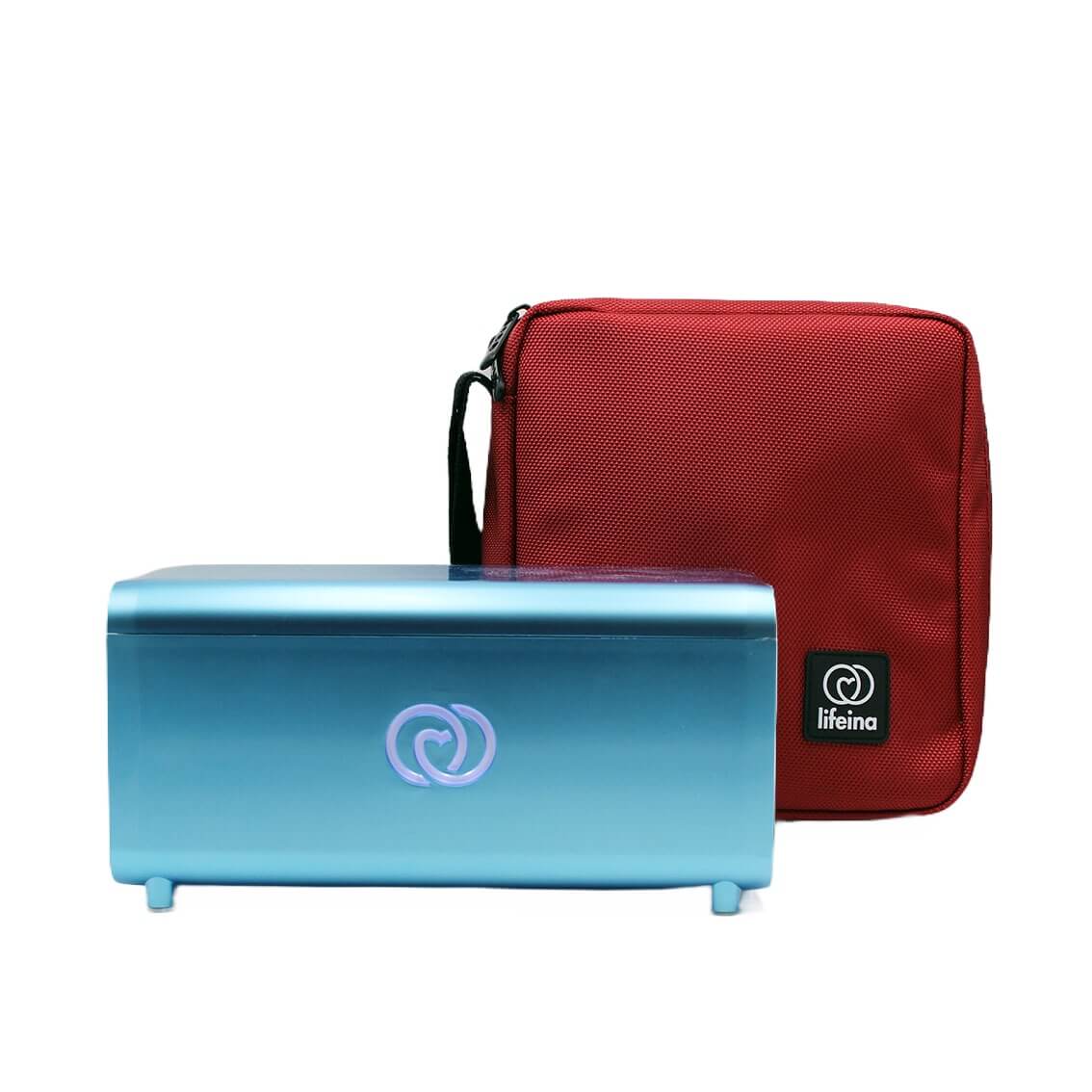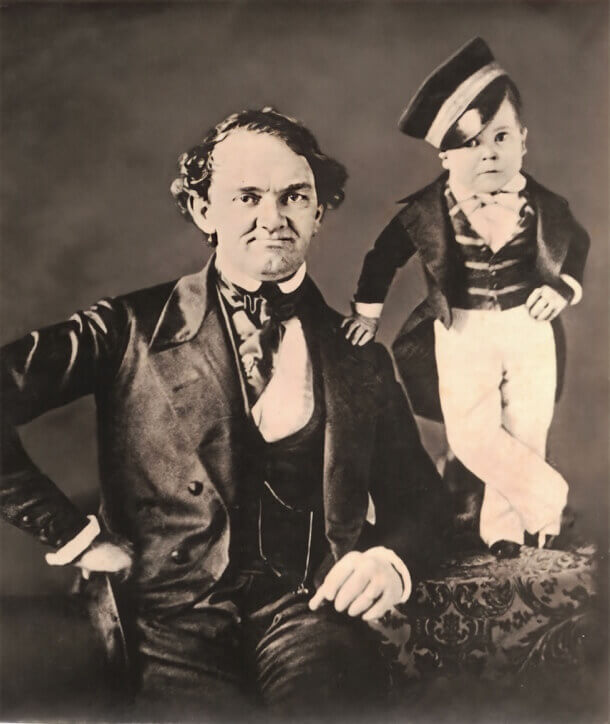

Lifeina Growth Hormone Travel Kit:
Safeguarding Fragile Medicines in Motion

Uwe Diegel
Official Manufacturer of Happiness, medical device designer, investor, pianist, keynote speaker, TEDx speaker, CEO at Lifeina, CEO at HealthWorks
September 17, 2025
In the silent hours before dawn, when airports are half-asleep and hotel minibars hum uncertainly in their corners, a quiet anxiety troubles the hearts of those who travel with fragile medicines. Among them are patients, parents, and athletes who carry growth hormone pens and vials in their luggage—medications that are as precious as they are perishable. It is for these people that Lifeina created the Growth Hormone Travel Kit, a discreet companion designed to cradle delicate molecules at the exact temperature they require, no matter where the road may lead.
The Smallest Fridge in the World
At the heart of the kit lies the LifeinaBox, the smallest refrigerator in the world. Shaped more like a sleek tech accessory than a medical appliance, it has a built-in 6-hour battery, it plugs into the wall at home, into the cigarette lighter of a car, or into an external battery pack when electricity is scarce. Inside, there is just enough room for several growth hormone pens or vials, and just enough intelligence to keep them at the life-preserving range of 2 to 8 degrees Celsius.
A companion mobile app whispers constant reassurance, displaying temperature and battery status in real time. For the hours in between, there is the LifeinaBag24, a soft insulated pouch that holds the cold for a day’s worth of travel, through customs and long layovers, while planes arc from continent to continent.
This duality—the portable fridge and the silent bag—forms the core of the Growth Hormone Travel Kit. Together they promise freedom: freedom from the tyranny of hotel fridges that sometimes freeze rather than cool, from the despair of a ruined holiday when a pen of growth hormone becomes useless, and from the gnawing worry that the cold chain has been broken in some unseen moment.
Why Cold Matters
Growth hormone is not like aspirin or vitamin tablets. It is a protein, folded into an intricate shape that gives it power to stimulate growth, regulate metabolism, and restore what is missing in those who cannot produce enough of it themselves. Yet this structure is fragile: too much heat, and the protein unravels like a ball of yarn; too much cold, and it clumps together in lifeless aggregates.
That fragility is why pharmaceutical leaflets repeat the warning like a litany: store in the refrigerator, do not freeze, protect from light. In the industry, the phrase is “maintain the cold chain” —an unbroken journey of chilled safety from factory to pharmacy to patient. Break the chain, and the hormone may lose its potency invisibly, leaving only uncertainty.
For families who have waited years for their child to grow, for adults who inject nightly to regain energy and strength, and for those who spend hundreds or thousands of euros on each course, this uncertainty is intolerable. The Lifeina kit, therefore, is not merely a box and a bag. It is reassurance in physical form.
Voices from the Field
On the product’s official page, the words of customers form a quiet chorus. A father writes that the kit has allowed his son to continue Norditropin injections even during summer vacations. Another mentions the relief of seeing temperature logs on the app, proof that the medicine remained safe while their family crossed borders.
The comments often repeat the same phrases: “peace of mind,” “easy to use,” “beautifully designed.” Parents emphasize that the device is simple enough for a child to manage; travelers praise the swift delivery and the adaptability of plugs to different countries.
There are criticisms too, though gentle ones: some devices, such as certain large injection pods, do not fit into the LifeinaBox’s cavity. For those, improvisation or alternative solutions remain necessary. But even these critics usually end with the same refrain: the kit has changed the way they travel, transformed anxious journeys into manageable ones.
A Brief History of Growth Hormone Therapy
To appreciate why such care is necessary, one must step back into history.
In the mid-20th century, growth hormone was first isolated from human pituitary glands. For decades, treatment relied on extracts taken from cadavers, a macabre process that was limited in supply and shadowed by tragedy. In the 1980s, several patients developed Creutzfeldt-Jakob disease after receiving contaminated cadaveric hormone. The shock was seismic; the therapy nearly collapsed.
From this darkness emerged a miracle of biotechnology: recombinant DNA techniques that allowed scientists to produce synthetic human growth hormone (somatropin) in bacteria. Suddenly, supply was limitless, purity assured, and children with growth hormone deficiency could finally grow to normal stature. Later, adults with deficiency found renewed energy, stronger bones, and improved quality of life.
Today, growth hormone is prescribed for a variety of conditions: Turner syndrome, Prader-Willi syndrome, children born small for gestational age, and idiopathic short stature. It is also sometimes misused, coveted by athletes and those who chase the chimera of eternal youth. That notoriety has given the hormone a peculiar dual reputation: both lifesaving treatment and forbidden elixir.
The Market Landscape
Behind the personal stories lies a vast and growing market. In 2023, the global growth hormone market was valued at over 6 billion dollars, and forecasts predict it may double within a decade. North America leads in revenue, while Asia-Pacific surges ahead in growth, as diagnosis and access expand.
The great names of the pharmaceutical world dominate this arena: Novo Nordisk, Pfizer, Eli Lilly, Sandoz (Novartis), Ipsen, Ferring, and Teva. Their scientists work on longer-acting formulations, aiming to replace daily injections with weekly ones, and to develop pens and pods that make therapy easier for children and adults alike.
Yet for all their brilliance in molecules, they remain dependent on the ordinary world of refrigerators and cool bags. The most sophisticated drug becomes useless if it spends one careless night on a hotel counter. In this fragile link between science and daily life, smaller innovators like Lifeina find their niche.
Famous Names and Public Curiosity
Growth hormone has always fascinated the public, often through the lives of those who did not have it. In the 19th century, P. T. Barnum’s famous performer “General Tom Thumb” exemplified the consequences of deficiency at a time when no treatment existed. More recently, speculation—often tabloid in nature—has surrounded athletes accused of using growth hormone illicitly to boost performance, from baseball players to cyclists.
These anecdotes, though colored by exaggeration, remind us of the hormone’s dual identity: a vital medicine for some, a symbol of unfair advantage for others. For patients, however, the reality is far less glamorous: it is about nightly injections, syringes or pens, and the quiet hope that the medicine remains potent.
The Invention of Peace of Mind
The story of Lifeina itself is shaped by personal experience. Its founder, Uwe Diegel, has often recounted that the idea was born after his brother’s medication was destroyed in a hotel minibar that froze instead of cooled. What began as an accident became a mission: to design a portable fridge that would be small, smart, and trustworthy.
The result was LifeinaBox, and later the specialized travel kits for insulin, multiple sclerosis drugs, and growth hormones. Each kit is tailored not only to the molecule but to the rituals of its users: the flights they take, the trains they board, the hotel rooms they inhabit.
Looking Ahead
As long-acting growth hormones enter the market, the daily rhythm of injections may change, but the need for reliable cold storage will not vanish. Proteins remain proteins; they demand the same vigilance. What will change is perhaps the size of the vials, the form of the devices, and the expectations of patients who want not just treatment but freedom.
Companies like Lifeina, MedActiv, and others in the niche world of portable cold chain solutions will continue to grow alongside the pharmaceutical giants, forming a quiet partnership: the scientists who design the molecules, and the engineers who protect them on their way to the patient.
Conclusion
The Lifeina Growth Hormone Travel Kit is not a revolution in molecular science, but it is a revolution in trust. It transforms fragile vials into companions for journeys, shields them from the chaos of travel, and offers patients something priceless: the certainty that their treatment will still work tomorrow.
In a world where airports misplace luggage, hotel fridges betray their guests, and flights stretch long into the night, that certainty is a rare luxury. For the families who depend on growth hormone, the Lifeina kit is more than a product. It is peace of mind, packed neatly into a box and a bag, whispering quietly: your medicine is safe, keep moving forward.
Find out more here on the Growth Hormones Travel Kit
Wherever life takes you — MedActiv goes with you.
ABOUT MEDACTIV
MedActiv is a global leader in the development of transport and storage solutions for sensitive medication. Our products are designed to give users the freedom to travel knowing that their medication is kept at exactly the right temperature. As the chosen partner of major pharmaceutical companies worldwide, MedActiv is constantly pushing back the boundaries of this industry.
MedActiv North America www.medactiv.ca MedActiv Europe www.medactiv.com MedActiv South America www.medactiv.cl MedActiv Australia www.medactiv.com.au LifeIna Europe www.lifeina.com
FOLLOW US
- Youtube

Unauthorised duplication or publication of any materials from this Site is expressly prohibited.

